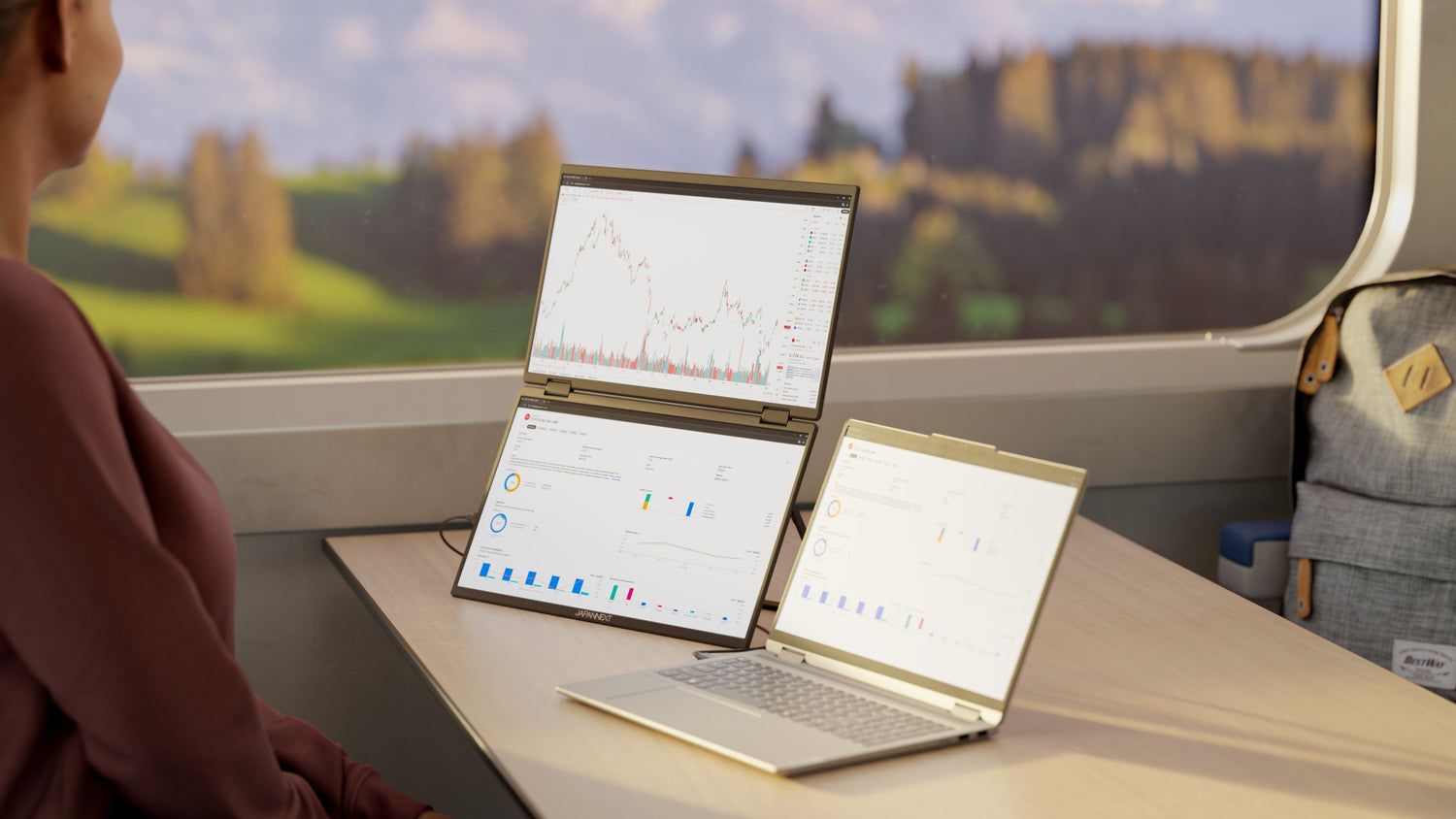Portable monitors are equipped with a range of connectivity options to meet all your video, audio and data transfer needs. In this article, we'll explore the different types of connectors available on mobile monitors and their specific uses. Whether you're looking to connect your laptop to a TV, external monitor or other accessories, knowing the different connectivity options is essential to choosing the best solution for your needs.
HDMI: A must for video and audio
The HDMI (High Definition Multimedia Interface) port is the most common and popular for video and audio connections between modern devices. It allows high-quality video and audio signals to be transmitted over a single cable, greatly simplifying the connection process.
HDMI has several advantages:
- Compatibility with most modern devices such as TVs, monitors, gaming consoles, Blu-ray players and many others
- Support for video resolutions up to 8K
- High-quality, multi-channel digital audio transmission
- Support for copyright protection technologies (HDCP)
However, it's important to note that the HDMI connector is quite bulky, which can be a problem on some desktop configurations or when using a more compact laptop.
USB Type-C: The new versatile standard
USB Type-C is a new connectivity standard that is rapidly gaining popularity due to its versatility and slim design. It can be used to transfer data, charge devices, as well as for video and audio.
Here are some key advantages of USB Type-C:
- Compatibility with a wide range of devices through its support of multiple interfaces (DisplayPort, HDMI, Thunderbolt 3, etc.)
- Data transfer speeds of up to 10 Gbps
- Powerful charging capabilities up to 100W
- Reversible format, which means there's no wrong way to plug in the cable
- USB-Type C power delivery: an option that frees you from your PC/MAC power cable and gives you greater convenience in your workspace.
However, it's worth noting that not all USB Type-C ports support all these features. For example, some ports may only support data transfer, while others may also support video and audio. So it's crucial to check the specification of the USB Type-C port on your mobile monitor to determine its capabilities.
Other video and audio ports
Besides HDMI and USB Type-C, there are other video and audio connectors on mobile monitors. Some of these are less common and may not be compatible with all devices.
VGA: The old analogue standard
VGA (Video Graphics Array) is an analogue video connector used to transmit video signals between a laptop and an external monitor or video projector. Although VGA is largely outdated due to the increasing popularity of digital connectivity such as HDMI and USB Type-C, some older mobile monitors may still include this port.
The disadvantages of VGA include:
- Maximum video resolutions limited to 2048 x 1536 pixels
- Loss of image quality due to digital-to-analogue signal conversion
- No support for audio signals
DisplayPort: An alternative to HDMI
DisplayPort is another type of digital video/audio input connector that can rival HDMI in terms of resolutions and data rates supported. It is often used in professional environments such as conference rooms and offices. Mobile monitors equipped with DisplayPort or Mini DisplayPort can also take advantage of daisy-chaining technology, which allows multiple external monitors to be connected without the need for an additional hub or adapter.
The advantages of DisplayPort include :
- Video resolutions up to 8K with high refresh rates
- Multi-channel audio support
- Downward compatibility with VGA, DVI and HDMI cables and adapters
DVI: an older digital option
DVI (Digital Visual Interface) is another type of digital video input connector that can be found on some older mobile monitors. There are three main types of DVI connector: DVI-A (analogue), DVI-D (digital) and DVI-I (integrated - supports both analogue and digital signals). While DVI offers better image quality than VGA due to its digital nature, it still suffers from some limitations compared to newer standards such as HDMI and USB Type-C.
The disadvantages of DVI include:
- No support for audio signals
- Video resolutions limited to 2560 x 1600 pixels (DVI Dual-Link)
- Lack of compatibility with the latest copyright protection technologies
Our portable monitor suggestion:
JN-MD-i156FHDR-T: This 15.6-inch FULL HD mobile monitor offers outstanding picture quality and true mobility, making it the perfect accessory for those who need a quality second monitor even on the move. It has an HDMI port and 2 USB Type-C ports so you can enjoy all your favourite content wherever you go.
The final word :
In short, knowing the different connectivity options for portable monitors allows you to choose the best solution for your video, audio and data transfer needs. Although HDMI and USB Type-C are currently the most common and versatile options, other standards such as DisplayPort, VGA and DVI can also be useful in specific situations.



